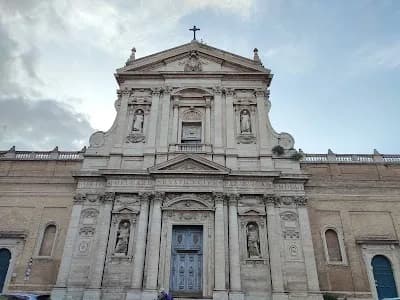
St. Susanna
Roman Virgin and Martyr
Saint Facts
- Origin:
- Italy
- Gender:
- Female
- Vocation:
- Unknown
- Birth:
- Unknown
- Feast Day:
- Aug 11
- Death:
- Unknown
Saint Details
St. Susanna was a 3rd-century Roman virgin and martyr, celebrated for her unwavering dedication to her faith. She was the niece of Pope Caius and a member of a noble Roman family. Her life became intertwined with the tumultuous period of Emperor Diocletian's persecution of Christians. Susanna's steadfast refusal to marry and her commitment to virginity led to her martyrdom, as she also declined to offer sacrifices to Roman gods.
The historical records of Susanna's life are limited, and much of her story is shrouded in legend. However, her feast day is commemorated on August 11 in the Roman Martyrology. The Church of Santa Susanna in Rome, originally dedicated to another saint, was named after her by the 6th century. This church has been a significant site for her veneration and is linked to her legacy as a model of Christian virginity and conviction.
St. Susanna's legacy extends beyond her martyrdom, symbolizing feminine strength and religious conviction under persecution. Her story has influenced Roman Catholic tradition, particularly in the context of early Church development and Christian-Pagan relations during the Diocletianic Persecution. Despite the lack of detailed historical documentation, Susanna remains an important figure in Catholic tradition, celebrated for her courage and faith.
Associated Holy Sites

Church of Santa Maria della Vittoria
Via Venti Settembre, 17, 00187 Roma RM, Italy

Chiesa di Santa Susanna alle Terme di Diocleziano
Via Venti Settembre, 14, 00187 Roma RM, Italy
Details for: Church of Santa Maria della Vittoria
The Church of Santa Maria della Vittoria, located in Rome, Italy, is a significant Catholic pilgrimage site known for its Baroque architecture and religious art. Built in the early 17th century, the church is dedicated to the Virgin Mary and commemorates the Catholic victory at the Battle of White Mountain during the Thirty Years War. Its most famous feature is the Cornaro Chapel, which houses Gian Lorenzo Berninis masterpiece, the Ecstasy of Saint Teresa, a sculpture depicting the mystical experience of Saint Teresa of Ávila. Pilgrims visit the church to admire its artistic beauty and to reflect on the spiritual themes of divine love and devotion. The church also serves as a place of prayer and contemplation, drawing visitors seeking a deeper connection to their faith. Its central location in Rome makes it easily accessible for those exploring the citys rich religious heritage.
🙏 No spam. Just grace. Unsubscribe anytime.